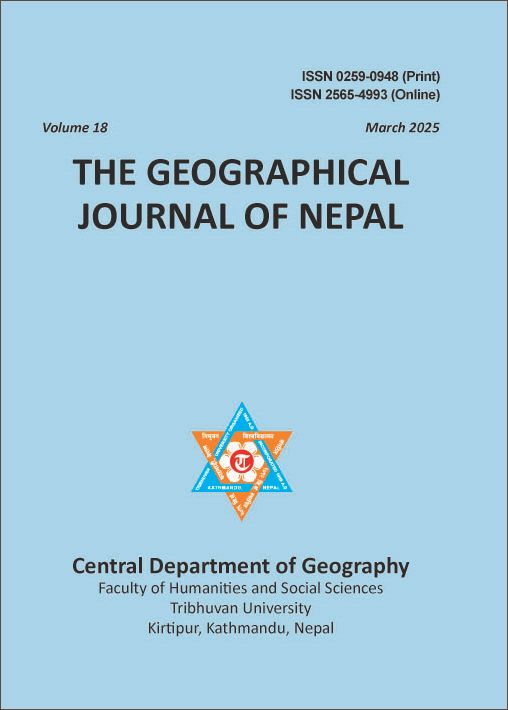Increasing Agricultural Inputs: Autonomous Adaptive Response to Climate Change and Variability Effects in Selected South Asian Countries
DOI:
https://doi.org/10.3126/gjn.v18i1.77052Keywords:
autonomous adaptation strategies, climate change and variability, crop production and productivity, maladaptation, resilient agricultureAbstract
The amount, duration, and timing of climatic factors like temperature, rainfall, and moisture are major determinants of crop production. In South Asia, more than 60% of agriculture is rainfed and susceptible to climate change and variability. Multiple climatic events, such as erratic and excessive rainfall, increasing temperature, longer dry spells, heat waves, and droughts, have had a major negative impact on production and farmers' livelihoods. Agricultural inputs are another major factor that determines agriculture production and productivity. This study explores the type of agricultural inputs, and utilization by smallholder farmers in the context of climate change and variability in selected study sites of three South Asian countries, Nepal, India, and Bangladesh. A descriptive exploratory research approach was adopted and the analysis is based on both primary and secondary data and document review. To comprehend the effects of climate change on agricultural input, we use a sample household survey of 633 farmers (211 in each country) together with six key informant interviews (KII) and three focus group discussions (FGD). The analysis of primary and secondary data exhibits four key agriculture inputs, fertilizer, pesticides and insecticides, improved crop and seed varieties, and irrigation facilities. The limited use of modern tools and machinery is evident due to higher investment costs for resource-poor smallholder farmers. The increased use of fertilizer and pesticides adheres to the adverse effects of climate change and variability particularly decreasing crop yield and increasing rodents and pests. It is reasoned that increased use of selected input harms environment sustainability, crop production, and productivity in the long run. This study concludes that developing environment-friendly and climate-resilient inputs, regulatory monitoring for efficient and productive use of inputs, and ensuring the availability and affordability of agricultural inputs to all farmers are vital for environmental sustainability, and increased agriculture production and productivity.
Downloads
Downloads
Published
How to Cite
Issue
Section
License
Copyright (c) 2025 The Author(s)

This work is licensed under a Creative Commons Attribution 4.0 International License.
© Authors




